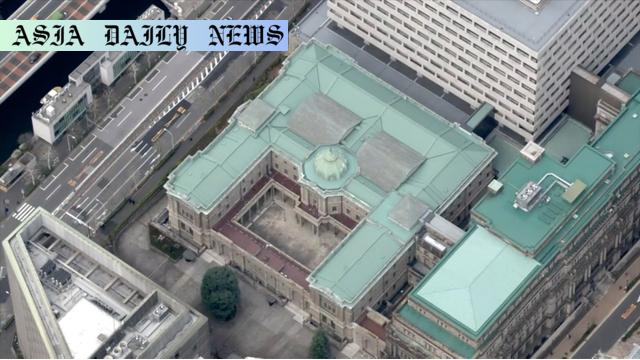BOJ interest rate: Japan’s central bank policymakers likely to leave interest rates unchanged amid domestic and global factors.
BOJ policymakers are inclined to maintain the current interest rate at 0.5%.
Economic growth and price trends could decelerate due to US-imposed tariffs.
Rising rice prices and widespread wage increases affect Japan’s economy.
US-China trade tensions remain a critical uncertainty for Japan.

Understanding BOJ’s Interest Rate Decision
The Bank of Japan (BOJ) is at a critical juncture as it deliberates keeping its key interest rate fixed during its latest policy board meeting. With the current rate at around 0.5%, nine key policymakers, including BOJ Governor Ueda Kazuo, are assessing impactful economic trends such as the rise in domestic product prices, US tariffs, and other external risks. Analysts and market participants have shown increased focus on this decision due to its repercussions on Asia’s second-largest economy.
Japan has witnessed a noticeable rise in the prices of goods, particularly rice, a key staple in the Japanese diet, alongside other commodities impacted by domestic wage hikes. The rise in wages, a result of company-led initiatives, was deemed a positive move toward enhancing household purchasing power. However, some experts argue that this isn’t enough to offset wider economic uncertainties stemming from global challenges like US tariff measures.
In recent months, Japan and the US have entered negotiations over tariffs. These talks, while essential for stabilizing bilateral economic ties, do cause short-term uncertainty for Japanese exporters. Moreover, the ongoing trade conflict between the US and China remains a complicating factor. Japanese businesses reliant on exports are cautious about making significant investments, fearing disruptions in global value chains.
Key Concerns Highlighted by Policymakers
Policymakers at the BOJ are signaling caution, with some projecting that economic growth and inflationary pressures might taper off in the medium term. This means that the optimistic outlook previously forecasted could be challenged as external headwinds, such as increasing trade barriers from the US, potentially disrupt business confidence.
Japan’s financial markets have also exhibited volatility in recent months. This underscores a need for consistency in monetary policy to ensure investor confidence and economic stability. Moreover, any hasty change in the central bank’s interest rate policy might exacerbate current uncertainties, making a case for sticking to the present policy stance.
In their meeting, BOJ officials are likely assessing both domestic and external economic factors. Among these, Governor Ueda and his team need to decide whether rice price inflation and wage hikes signal sustainable growth or merely temporary spikes. Attention also remains on how BOJ’s policies align with wider government initiatives meant to steer the Japanese economy toward consistent, long-term prosperity.
Future Pathways for Japan’s Monetary Policy
The BOJ’s decision, irrespective of its final outcome, will set the tone for Japan’s monetary framework in the months to come. If the bank retains its 0.5% interest rate as anticipated, it would indicate a cautious yet pragmatic approach, balancing domestic inflation control with the risk of overburdening businesses.
However, monetary policy cannot operate in isolation. It must interact dynamically with fiscal efforts, trade negotiations, and structural reforms. For instance, Japan’s ongoing talks with Washington on tariff agreements carry significant weight for its industries, particularly manufacturing and technology. Any concessions or agreements must balance safeguarding industrial competitiveness with fostering global trade ties responsibly.
While uncertainties persist, one thing is clear: Policymakers in Japan are aiming for a delicate equilibrium between promoting economic growth and maintaining price stability. The coming months will reveal how well they’ve navigated these complexities in their latest monetary policy decisions. Investors, market dynamics, and global stakeholders will watch closely.
Commentary
BOJ’s Deliberations and the Future of Economic Policy
The Bank of Japan’s decision-making process epitomizes the complex balance financial institutions must strike between stabilizing growth and managing risks. Growth, inflation, trade barriers, and external uncertainties are unpredictable variables requiring thoughtful navigation.
One extraordinary element in this economic equation is the impact of rising rice prices and salary increases. While these are welcome signs of domestic economic activity picking up, they also underscore inflationary challenges. Policymakers are likely weighing if these trends are transient or indicative of longer-term structural adjustments in Japan’s economy.
On the global front, US tariffs have emerged as a significant threat to many economies, including Japan’s heavily export-oriented industries. This underscores the importance for Japan to create resilient policies that can withstand potential trade shocks, particularly if negotiations with the US turn contentious. Concurrently, the US-China trade deadlock only adds another layer of uncertainty to these deliberations.
The Monetary Policy Board’s outcome will undoubtedly be a signal to global markets. It is essential, however, to recognize that the BOJ’s decision to maintain economic stability does not mean that Japan is immune to external risks. Structural reforms and cooperation with other governments remain pivotal.
Final Thoughts
The BOJ’s cautious stance highlights the cautious optimism felt by its leaders. Maintaining low interest rates while addressing multifaceted issues—from domestic inflation to global trade dynamics—is far from straightforward. Investors and market watchers would do well to acknowledge these complexities. How BOJ Governor Ueda and his team choose to steer Japan forward will hold lessons not just for Japan, but for other economies facing similarly volatile times.


